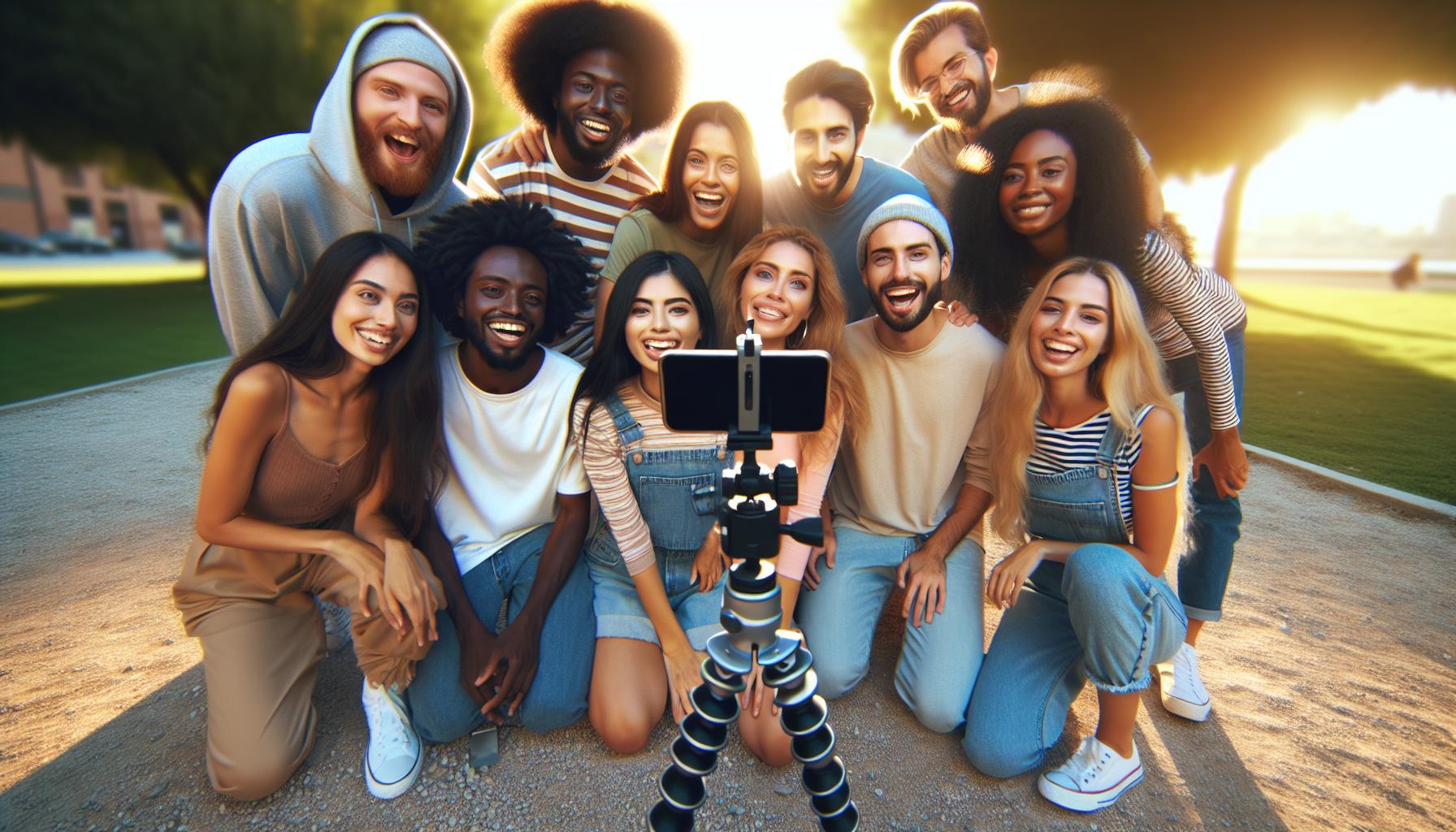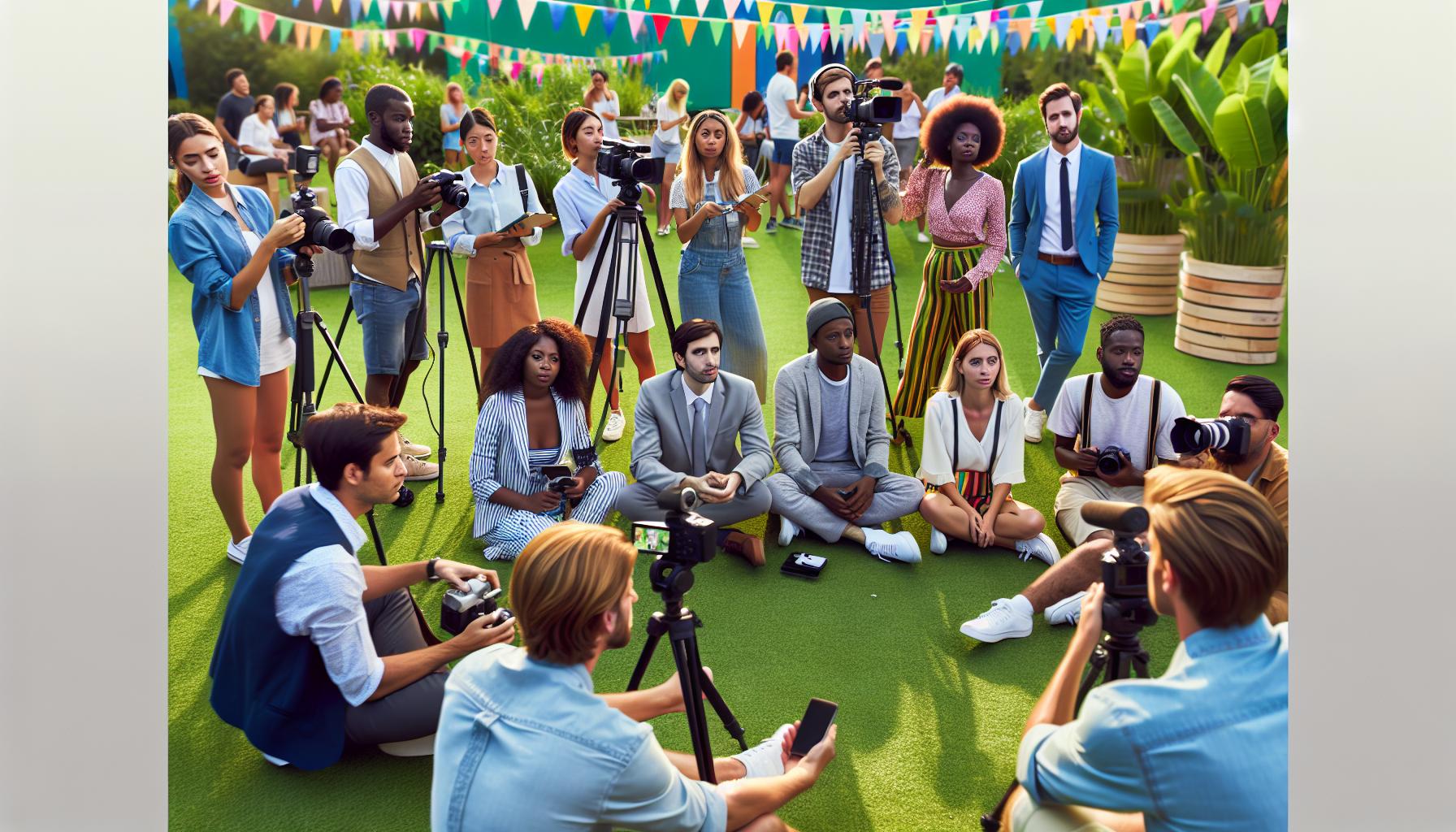In 2019, social media wasn’t just a place to share cat memes and vacation pics; it evolved into a dynamic landscape where brands and users danced the cha-cha of engagement. With platforms constantly rolling out new features, it felt like trying to keep up with a toddler on a sugar high. From the rise of ephemeral content to the explosion of influencer marketing, the trends that emerged shaped how people connected, communicated, and consumed.
As businesses scrambled to stay relevant, they quickly learned that mastering social media meant more than just posting pretty pictures. It required a keen understanding of audience behavior and a sprinkle of creativity. Buckle up as we dive into the top trends of 2019 that transformed social media into a powerful tool for connection and commerce, proving that in this digital age, staying ahead is key to survival.
2019 Trends Social Media
Social media in 2019 experienced significant shifts, redefining how brands and consumers interact. Ephemeral content emerged as a powerful trend, with platforms like Instagram Stories and Snapchat leading the way. This approach allowed users to share transient moments, enhancing engagement through authenticity.
Influencer marketing gained momentum, with brands leveraging the reach of social influencers to connect with target audiences. Collaborations between businesses and influencers demonstrated effectiveness in driving consumer trust and loyalty. Businesses noted a clear increase in return on investment by utilizing this method.
User-generated content also rose in popularity. Audiences actively participated in content creation, enriching community connections and brand engagement. Brands that encouraged user contributions reaped benefits, as this type of content fostered authenticity and trust.
Video content became essential in 2019. Short-form videos, particularly on platforms like TikTok, captivated users. Marketers recognized the importance of video in storytelling, leading to higher engagement rates. Creative video campaigns resonated well with audiences and resulted in increased shares and likes.
In addition, social commerce gained traction. Platforms integrated shopping features, enabling direct purchases from social media posts. This trend streamlined the shopping experience, making transactions convenient for users and enhancing brand visibility.
Businesses focused on social listening, using analytics tools to track audience sentiments and preferences. Understanding user behavior enabled companies to adapt strategies and improve customer experiences. Timely responses to trends played a critical role in achieving brand relevance in this evolving landscape.
2019 firmly established social media as a dynamic mechanism for connection and commerce. Adapting to these trends became crucial for brands aiming to thrive in the competitive digital world.
Key Platforms and Their Innovations


2019 saw significant innovations across major social media platforms, enhancing user experience and engagement.
Facebook’s Evolving Algorithm
Facebook refined its algorithm to prioritize meaningful interactions. User engagement metrics, such as comments and shares, gained importance over mere likes. Increased transparency from Facebook led to clearer expectations for businesses. Brands adapted content strategies, focusing on compelling storytelling and community-oriented posts. These adjustments aimed to enhance user experience while fostering genuine connections among users.
Instagram’s Rise in Popularity
Instagram’s emphasis on visual content fueled its 2019 trends social media. The introduction of IGTV allowed longer videos, catering to creators and brands. Enhanced shopping features streamlined the purchase process, merging e-commerce with social interaction. Influencer collaborations ramped up, driving authenticity and engagement among users. The platform’s stories feature thrived, encouraging spontaneous sharing and creating a sense of urgency that kept audiences engaged.
Twitter’s User Engagement Strategies
Twitter implemented various strategies to boost user engagement during 2019. Features like polls and threads encouraged interactive discussions and longer conversations. Enhanced analytics provided insights into trending topics, allowing brands to participate in relevant dialogues. Live video integration increased real-time engagement, fostering urgency and connection among users. These strategies enabled brands to connect with audiences in meaningful ways, reinforcing their online presence.
Content Creation and Marketing Strategies


Content creation and marketing strategies evolved significantly in 2019, influenced by user engagement and brand awareness. Emphasizing visual storytelling became essential for brands to connect authentically with their audiences.
Video Content Dominance
Video content stood out as a key driver for engagement. Short-form videos on platforms like TikTok attracted millions, capturing attention and generating interest. Brands utilized live streaming to establish real-time connections, fostering community interactions. Integration of IGTV on Instagram allowed for longer content, providing opportunities to delve deeper into brand storytelling. Consequently, video marketing surged, and businesses began prioritizing high-quality visual content to enhance their outreach.
Influencer Marketing Trends
Influencer marketing gained substantial traction as brands sought to tap into genuine connections. Collaborations with micro-influencers appeared particularly effective, often resulting in higher engagement rates. Trustworthiness characterized partnerships, as brands focused on aligning with influencers whose values matched their own. Data from 2019 showed that user trust in influencer recommendations led to increased consumer loyalty. Growing emphasis on authenticity shaped campaigns, encouraging businesses to select influencers who fostered genuine relationships with their followers.
User Behavior and Demographics


User behavior and demographics significantly shaped social media trends in 2019. Understanding these patterns helps brands engage effectively with their audiences.
Gen Z’s Social Media Preferences
Gen Z prefers platforms that prioritize visual content and authenticity, such as Instagram and TikTok. Engaging with ephemeral content often captures their attention. They favor short, snappy videos over long-form content, appreciating quick and impactful messages. Instant connection defines their social media experience, prompting brands to create relatable and entertaining content. Authenticity resonates strongly with this demographic, making user-generated content a powerful tool for brands seeking to establish credibility.
Shifts in Millennial Engagement
Millennials exhibit a shift toward platforms emphasizing community and interaction, like Facebook and Instagram. They value informative content, leading to an increased preference for video formats that tell a story. Collaborations with influencers play a vital role in their purchase decisions, with trust in these figures translating to brand loyalty. Additionally, Millennials appreciate seamless shopping experiences integrated into social platforms, reflecting their convenience-oriented mindset. Engaging content that informs and entertains defines their social media interactions, prompting brands to adapt accordingly.
Emerging Technologies in Social Media
Emerging technologies played a pivotal role in transforming social media in 2019, enhancing user experiences and fostering engagement.
Augmented Reality Features
Augmented reality features gained traction across social media platforms. Users engaged with immersive experiences, creating interactive content that stood out. Instagram and Snapchat introduced filters that allowed users to overlay graphics on their faces and surroundings, generating excitement among users. Brands utilized these features for targeted advertising, prompting higher participation rates. Innovative campaigns leveraging AR not only captured attention but also encouraged sharing, further amplifying brand messages. Enhanced engagement through these features solidified AR’s significance in social media marketing strategies.
AI and Chatbots in Customer Engagement
AI and chatbots emerged as vital tools for customer engagement on social media. Automated responses powered by AI provided instant assistance to users, improving communication efficiency. Businesses deployed chatbots to handle customer inquiries, resulting in quicker resolutions and enhanced user satisfaction. Social media platforms integrated AI algorithms to analyze interactions, allowing brands to adapt messaging based on audience preferences. Conversational AI identified trends in consumer feedback, helping brands refine their strategies. Personalized interactions facilitated through chatbots strengthened connections, fostering brand loyalty and improving the overall customer experience.
Trends of 2019
The trends of 2019 marked a pivotal year for social media, reshaping how brands connect with consumers. The rise of ephemeral content and video engagement transformed user interaction, making authenticity a key driver of brand loyalty. As businesses embraced influencer marketing and user-generated content, they found new ways to foster community and trust.
Emerging technologies like augmented reality and AI further enhanced the user experience, allowing brands to personalize their messaging and improve engagement. As social commerce gained momentum, the integration of shopping features streamlined the purchasing process, reflecting the evolving expectations of consumers. Staying attuned to these trends is essential for brands aiming to thrive in the ever-changing digital landscape.


